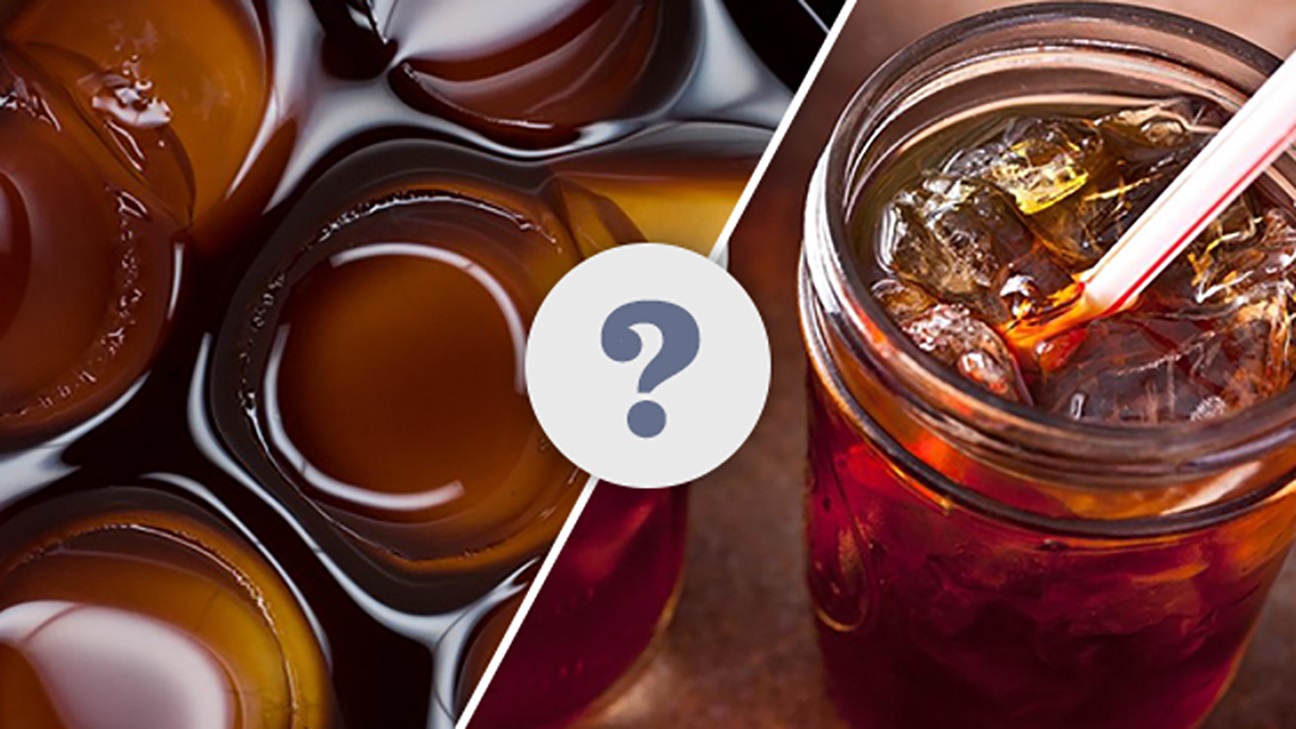These two chill vibes are achieved via different methods.
When it comes to chilled coffee drinks, what is the difference between cold brew and iced coffee? It’s all in the method. When it’s too hot outside to swallow a steaming caffeinated beverage, much less hold it, you probably don’t even care, but you’re definitely more likely to choose a cold cup of java for your morning jolt or afternoon pick-me-up.
You’ve seen this cold brew coffee trend the last several years. Yet cold brew coffee is almost twice the price as iced coffee at the local coffee shop. You grapple with the conflicting values of thriftiness and coffee snobbery. What makes cold brew coffee so special anyway?
Well, there’s the less watered-down taste of course. To do that, this higher-end chilly coffee retains its integrity in one main way: The coffee is brewed in cold (or room temperature) water, rather than hot water. Shocker, we know. But there’s much more to it. Let’s delve into the details of this popular summertime drink and also tell you the best way to make both at home so you can save a few dollars.
Cold brew is created by steeping medium-to-coarse ground coffee in room temperature water for 12 hours or longer and then filtering out the grounds for a clean cup without sediment. Unlike regular coffee, cold brew is never exposed to heat. Cold brew uses time, rather than heat to extract the coffee’s oils, sugars, and caffeine. (But, because rules were meant to be broken and some people prefer the taste, hot bloom cold brew is a thing.)
Cold brew coffee is for those who plan ahead. It’s a long, gradual process, that can take up to 24 hours, like making sun tea, only without the sun. The result is a very smooth, rich infusion, with low levels of acidity, which can be a relief to those with sensitive digestive systems. But this process can flatten a coffee’s taste, leaving behind the nuances of properly ice-brewed coffee, which some describe as a full-bodied, Guinness-type mouthfeel.
The upside: The cold-brew process, while it takes time, is less fiddly than ice brewing—basically, you just set it up and walk away till it comes time to strain the concentrate.
Iced Coffee
Iced coffee is created like any regular hot coffee brew method. It’s simply hot coffee that has been cooled down so that it can be poured over ice.
Pouring day-old cold coffee left in the pot over a handful of ice cubes is not iced coffee—at least, not optimal iced coffee. Letting brewed coffee sit around for awhile causes it to oxidize, making the flavor go bitter, flat, and otherwise funky.
Those who are really serious about making good iced coffee use the Japanese method: pour-over coffee set up to drip onto ice cubes, instantly cooling the brew. This method does a pretty good job preserving the richness, acidity, and aroma of fresh coffee while simultaneously making it heat wave–ready. You’ll want to use only about 10 percent more coffee in this method. The slow cooling (pouring drop-by-drop onto ice) ensures minimal dilution, unlike pouring a bunch of hot coffee onto cubes, which causes more dilution. So properly made iced coffee shouldn’t end up watery.
Post time: Jun-18-2022


